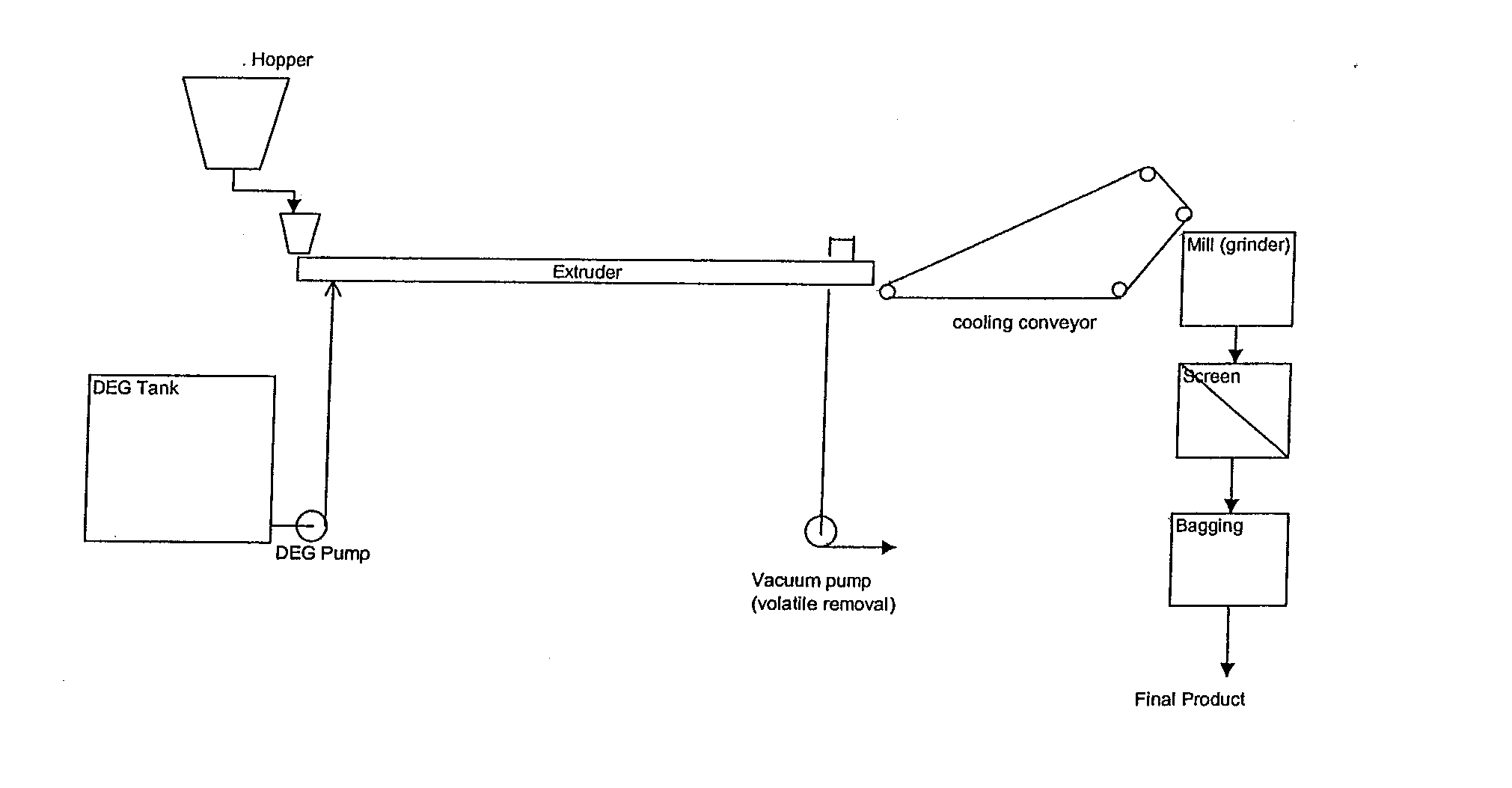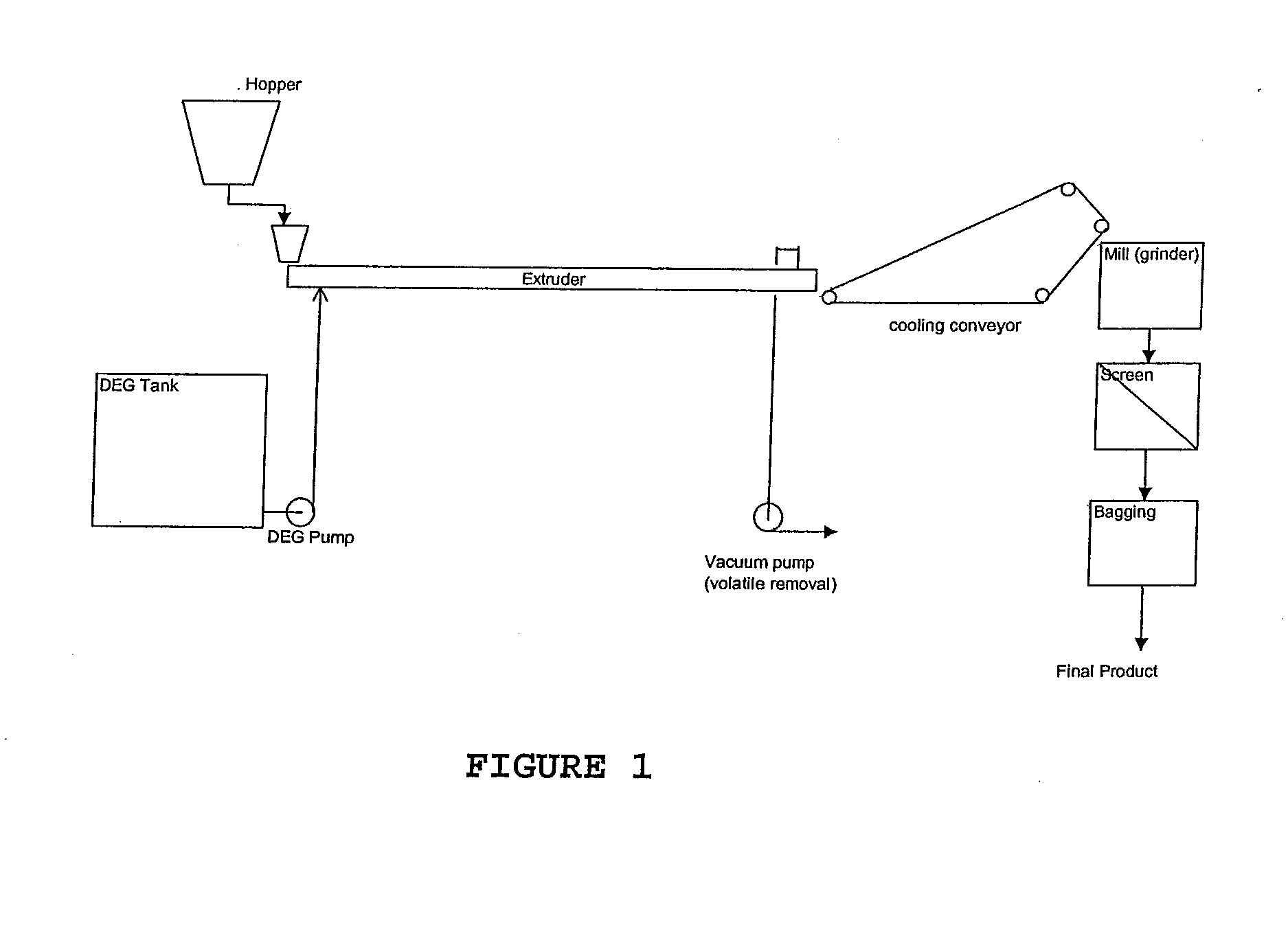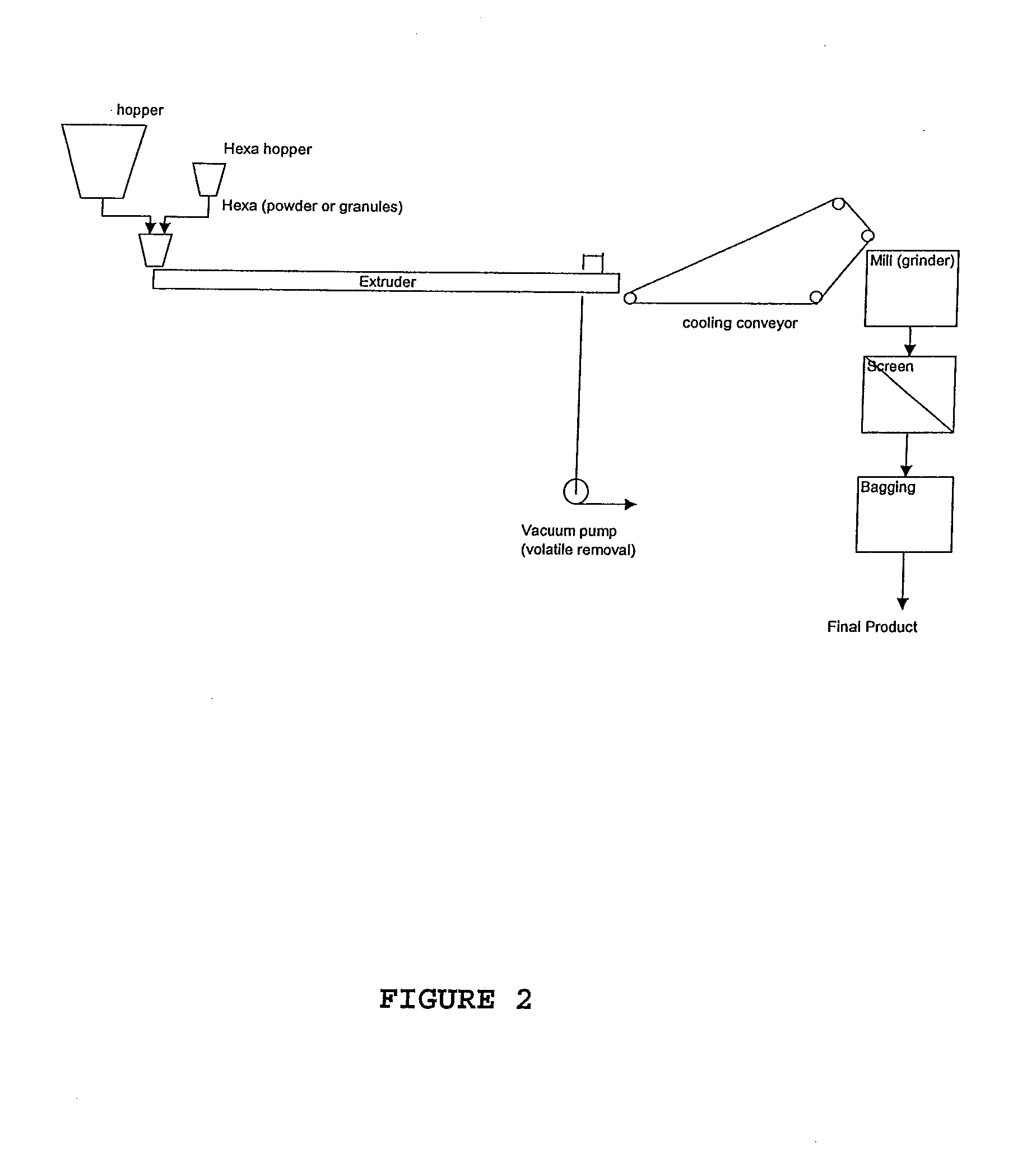Methods for Producing Modified Aromatic Renewable Materials and Compositions Thereof
a technology of renewable materials and aromatic aromatics, applied in the direction of lignin derivatives, friction linings, mechanical instruments, etc., can solve the problems of limited use potential of pf resin systems, insufficient flow, and significant pollution, and achieve the effect of increasing the reactivity of thermoset systems and low softening temperatures
- Summary
- Abstract
- Description
- Claims
- Application Information
AI Technical Summary
Benefits of technology
Problems solved by technology
Method used
Image
Examples
example 1
Origin of the Lignins and Other Chemicals Used
[0040] Soda lignin cake at about 35% solids was obtained from Asian Lignin Manufacturing Pvt. Ltd. (Chandigarh, Punjab, INDIA), a company which recovers lignin from several raw materials including wheat straw and sarkanda grass alone or in combination, among others. The lignin cakes were dried in a continuous dryer, in some cases after adjusting the pH of the cake.
[0041] Samples with the following characteristics were obtained:
SampleSample designationSA (100 SAWA (100 WAProperty140-2)SN140-1)WNType ofSarkandaSarkandaWheatWheatligninLow pHNearStraw LowStraw NearneutralpHneutral% solids93.5994.8396.3895.0Softening>200>200>200>200temperature,C.pH2.115.972.276.07% ash2.618.042.716.66Aromatic OH,1.752.331.901.85mmole / gCarboxyl,2.121.592.282.17mmole / g
[0042] In addition lignin was obtained from Asian Lignin Manufacturing Pvt Ltd in powder form, having the characteristics mentioned below:
Sample designationWSAType of ligninMixture Sarkanda ...
example 2
Effect of Treatment with DEG of Various Lignin Materials in Rheomix 600 Trials
[0044] A pre-blend of each lignin sample was made with DEG at a level of 10 parts per hundred (PHR). The blends were processed for 3.5 minutes at 140° C. at 40 RPM in a Rheomix 600 made by Haake. In this apparatus the material is mixed intimately under shear and temperature. Softening point of the resulting product was determined with a melting point apparatus. The effect of the different treatments on the softening point is shown in the following table. As observed, the treatment with DEG resulted in a significant lowering of the softening point from over 200° C. for the untreated materials to 130 to 148° C. for the modified lignin.
SofteningSampleLigninAdditivePoint, ° C.NumberSAUntreated>200SA10 PHR DEG130U 2-13WAUntreated>200WA10 PHR DEG148U 4-12WNUntreated>200WN10 PHR DEG138U 4-9
example 3
Effect of Various Additives in Lowering of Softening Temperature in Rheomix 600 Trials
[0045] A pre-blend of each lignin sample was made with additives DEG, TEG and PEG. The additives were added at a level of 10 PHR. The blends were processed for 3.5 minutes at 150° C. at 40 RPM in a Rheomix 600 made by Haake. In this apparatus the material is mixed intimately under shear and temperature. The effects of the different treatments on the softening point are shown in the following table. As observed, the treatment with these glycols results in a significant lowering of the softening point from over 200° C. for the untreated materials to 117-140° C. for the modified materials.
SofteningSampleLigninAdditivePoint, ° C.NumberSAUntreated>200SADEG117U 2-12SATEG137U 2-14SAPEG130U 2-15SNUntreated>200SNDEG124U 2-16SNTEG140U 2-17SNPEG130U 2-18
PUM
| Property | Measurement | Unit |
|---|---|---|
| Temperature | aaaaa | aaaaa |
| Pressure | aaaaa | aaaaa |
| Temperature | aaaaa | aaaaa |
Abstract
Description
Claims
Application Information
 Login to View More
Login to View More - R&D
- Intellectual Property
- Life Sciences
- Materials
- Tech Scout
- Unparalleled Data Quality
- Higher Quality Content
- 60% Fewer Hallucinations
Browse by: Latest US Patents, China's latest patents, Technical Efficacy Thesaurus, Application Domain, Technology Topic, Popular Technical Reports.
© 2025 PatSnap. All rights reserved.Legal|Privacy policy|Modern Slavery Act Transparency Statement|Sitemap|About US| Contact US: help@patsnap.com



